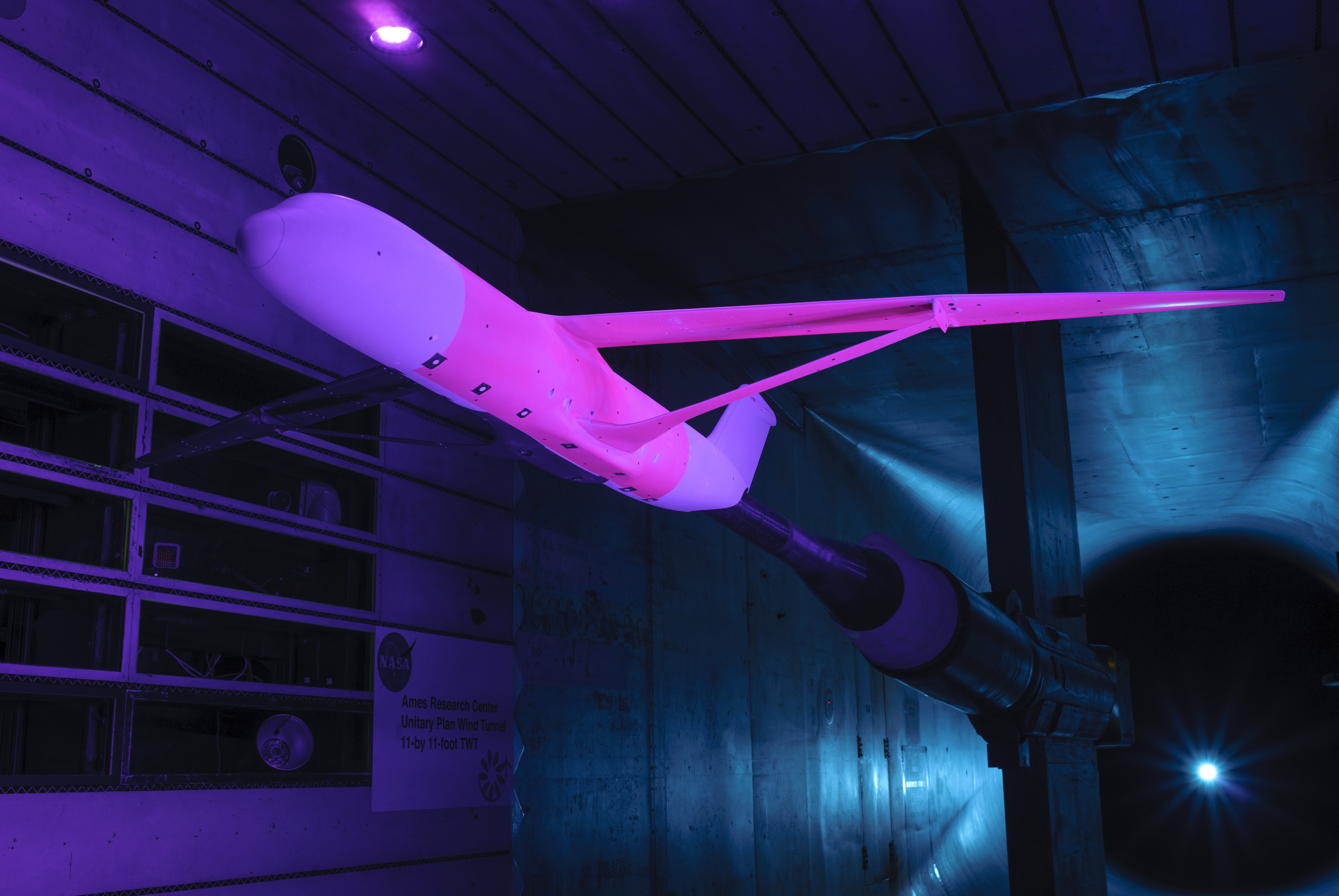NASA Is Painting Rocket and Plane Models Hot Pink … for Science

To see how new rocket and aircraft designs perform under pressure, NASA's aeronautical innovators are painting model prototypes an eye-searing hot pink for wind tunnel tests in California and Virginia.
The wild paint job isn't just for looks. NASA engineers are using a pressure-sensitive paint (PSP) that can show — with a dazzling glow — how the surface of a rocket or aircraft model responds to pressure. NASA is conducting the tests in wind tunnels at the agency's Ames Research Center in California and Langley Research Center in Virginia.
Here's how it works: Once inside the wind tunnel, the model aircraft is illuminated with blue LED lights to give the fluorescent paint a bright-pink glow. Then, high-speed winds flow across the model, creating a range of surface pressures across different parts of the aircraft. [NASA's Vision of Future Air Travel in Pictures]
Oxygen in the wind reacts with luminophores, or fluorescent particles, in the paint, quenching its glow under high pressure. The varying shades of dull and bright pink that result allow researchers to visualize exactly how the pressure is distributed.
"PSP is great because, as long as you can apply paint to the area you want to test, illuminate it with a lamp and view it with a camera, you can gather data you might not otherwise be able to get," Nettie Roozeboom, an aerospace engineer at NASA's Ames Research Center, said in a statement.
Understanding how pressure is distributed over the surfaces of an aircraft is important for designing new planes that don't fall apart while flying in high-speed winds. But it also helps engineers build aircraft that are more efficient. With less wind resistance, aircraft require less fuel, emit less pollution and produce less noise.
NASA has used PSP to test airplanes for more than 25 years. Today, the agency is working to make more effective PSPs to test vehicles that leave Earth as well. The goal is to create a new and improved PSP that responds faster to pressure while also being less sensitive to temperature than the existing technology is.
Breaking space news, the latest updates on rocket launches, skywatching events and more!
But there is one thing about this paint that will likely never change: its neon-pink glow.
Email Hanneke Weitering at hweitering@space.com or follow her @hannekescience. Follow us @Spacedotcom, Facebook and Google+. Original article on Space.com.

Hanneke Weitering is a multimedia journalist in the Pacific Northwest reporting on the future of aviation at FutureFlight.aero and Aviation International News and was previously the Editor for Spaceflight and Astronomy news here at Space.com. As an editor with over 10 years of experience in science journalism she has previously written for Scholastic Classroom Magazines, MedPage Today and The Joint Institute for Computational Sciences at Oak Ridge National Laboratory. After studying physics at the University of Tennessee in her hometown of Knoxville, she earned her graduate degree in Science, Health and Environmental Reporting (SHERP) from New York University. Hanneke joined the Space.com team in 2016 as a staff writer and producer, covering topics including spaceflight and astronomy. She currently lives in Seattle, home of the Space Needle, with her cat and two snakes. In her spare time, Hanneke enjoys exploring the Rocky Mountains, basking in nature and looking for dark skies to gaze at the cosmos.


